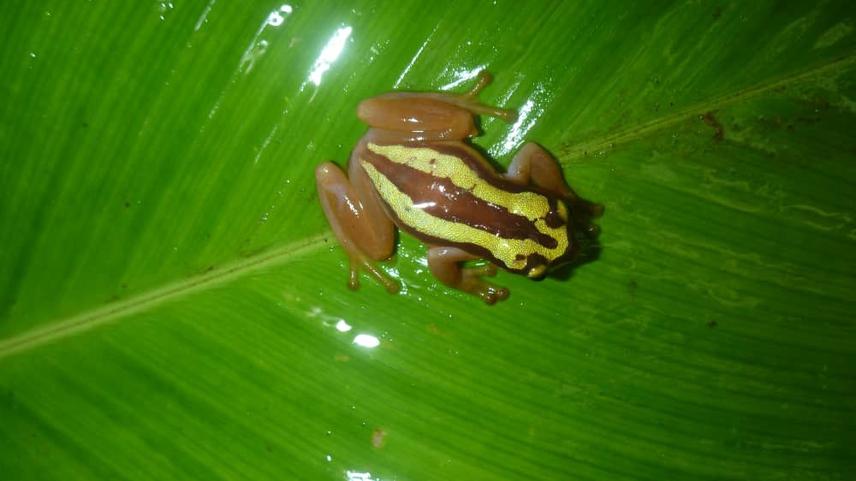Mayke De Freitas Santos
3D Characterisation of Phytotriades auratus habitat and installation of camera traps to monitor Phytotriades auratus in Península de Paria

Phytotriades auratus is a unique bromeliad dwelling hylid that, until very recently, was thought to be restricted to two mountain localities in the Republic of Trinidad & Tobago. The recent discovery in Cerro Humo, Península de Paria, Northeastern Venezuela, of a third population in 2015, and a fourth population in Trinidad Island through eDNA sampling in 2016, have shed some new light into this, otherwise, elusive species. Several questions remain unanswered though; what is the extent of its occurrence? How many individuals are there? Do they share their dwellings with other individuals or are they territorial? All these questions have been difficult to answer in the past due to extremely rough terrain conditions, the invasive nature of traditional survey methods and the impossibility of long term monitoring. We now attempt to answer those questions using drones and fit-for-the-purpose camera traps.
The team will attempt to map the summits where the tank bromeliad Glomeropitcairnia erectiflora is present, in order to understand the geographical and physical characteristics that allow the existence of P. auratus unique habitat. Camera traps will be placed over the bromeliads to try to catch a glimpse of P. auratus habits and behaviour. We’ll setup a blog soon for all of you who want to follow this project. Keep following our updates!